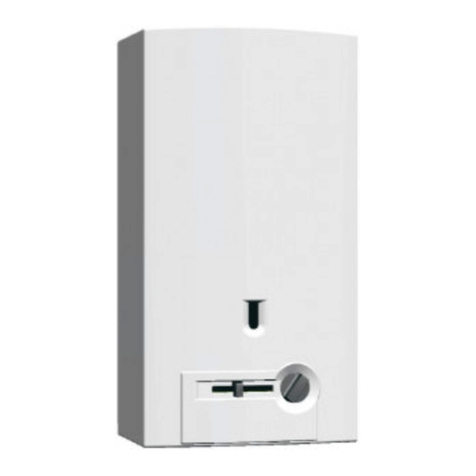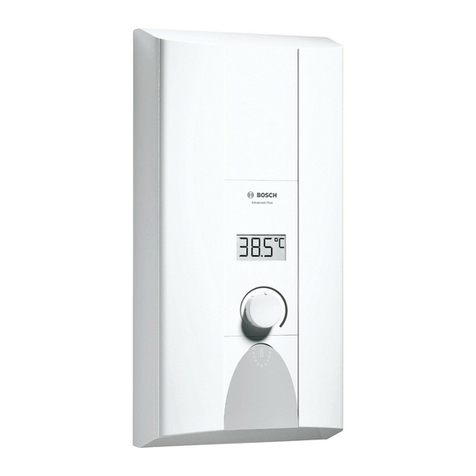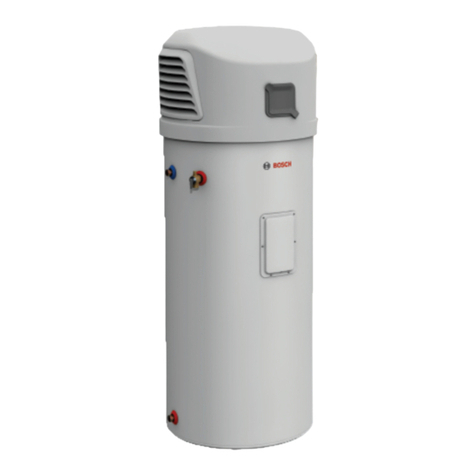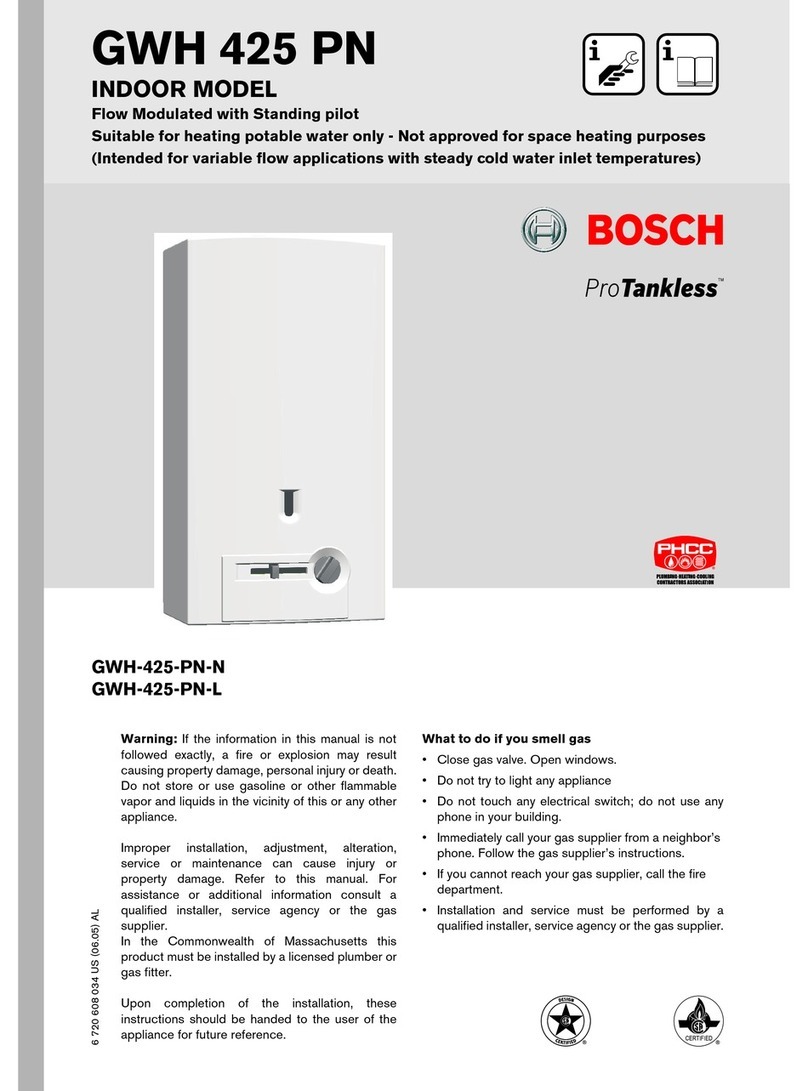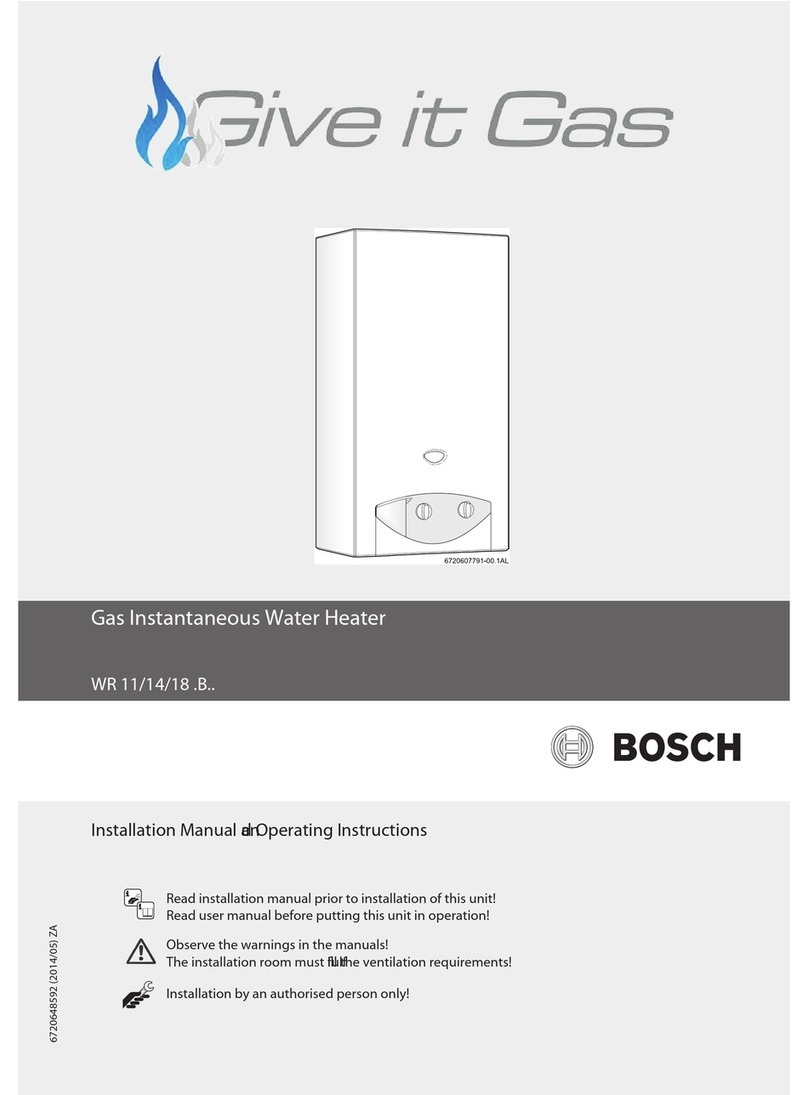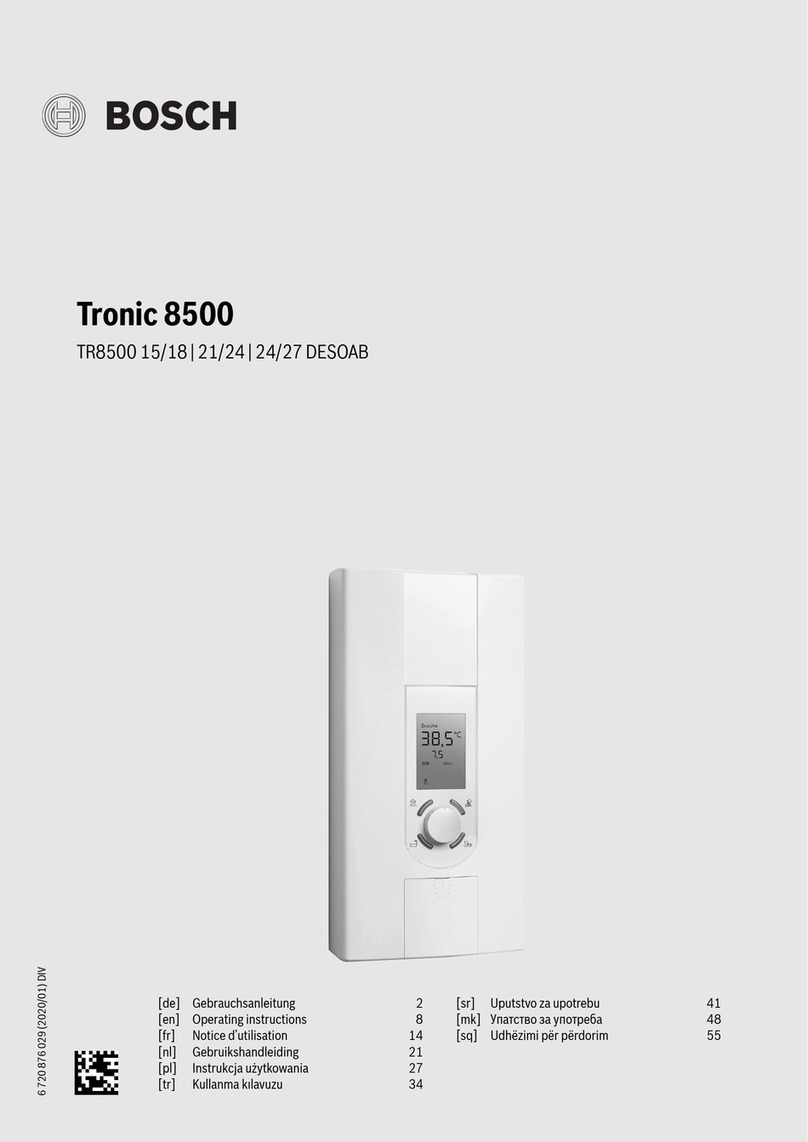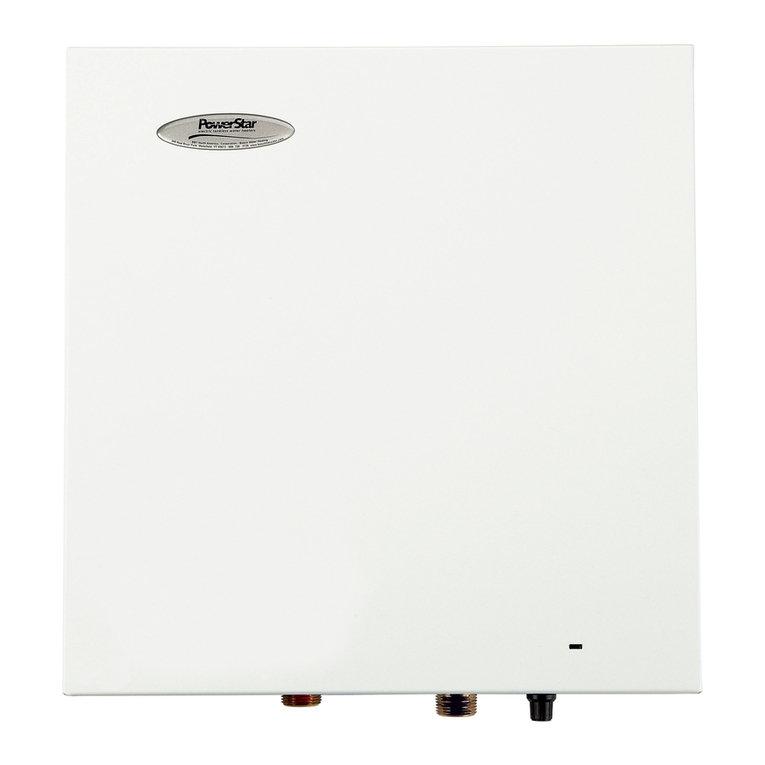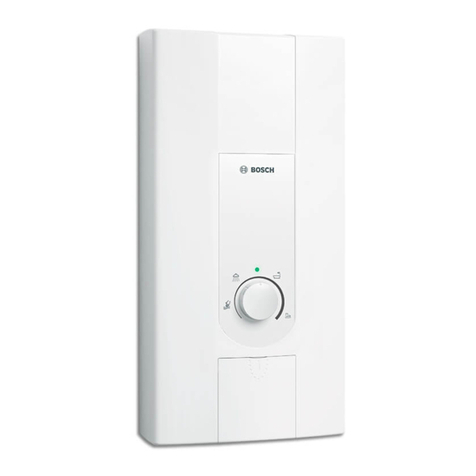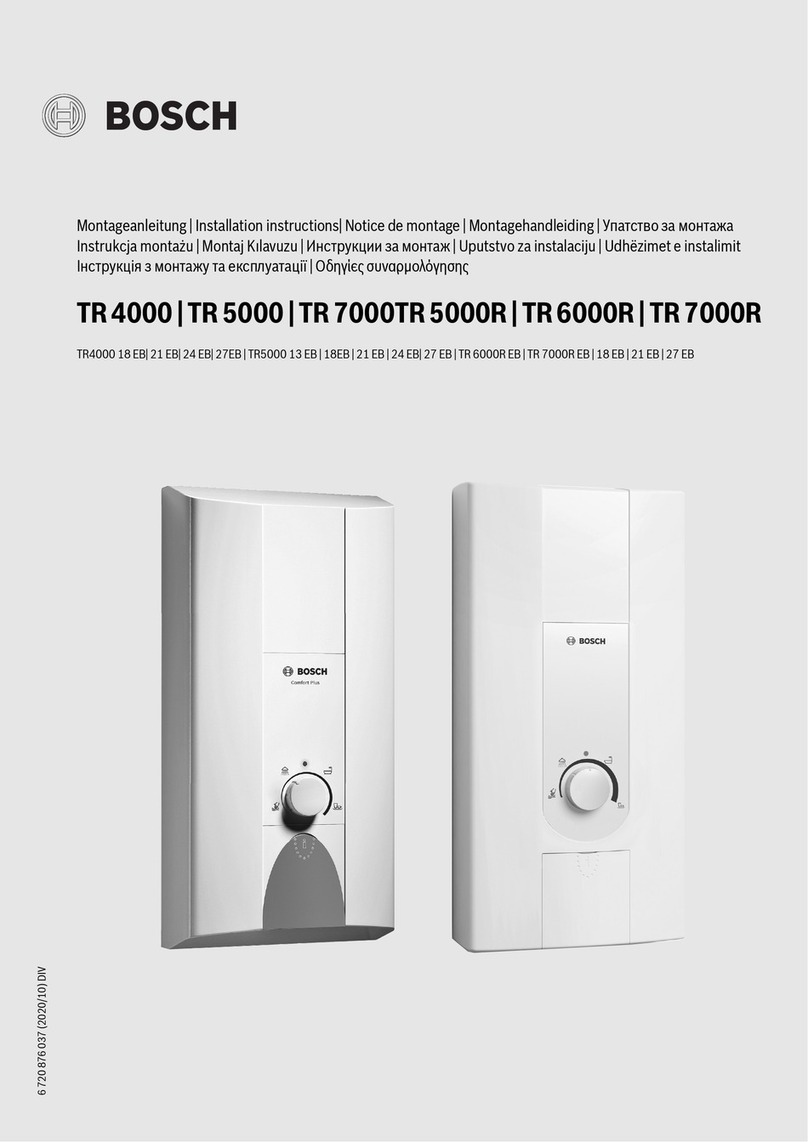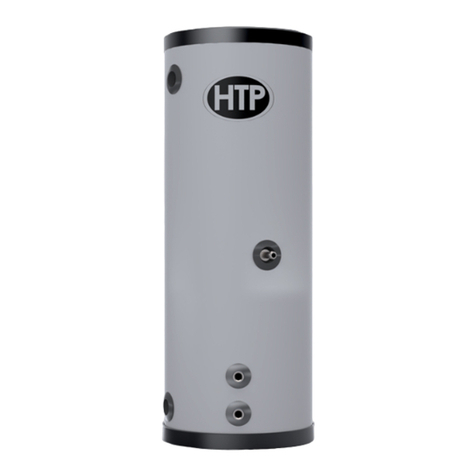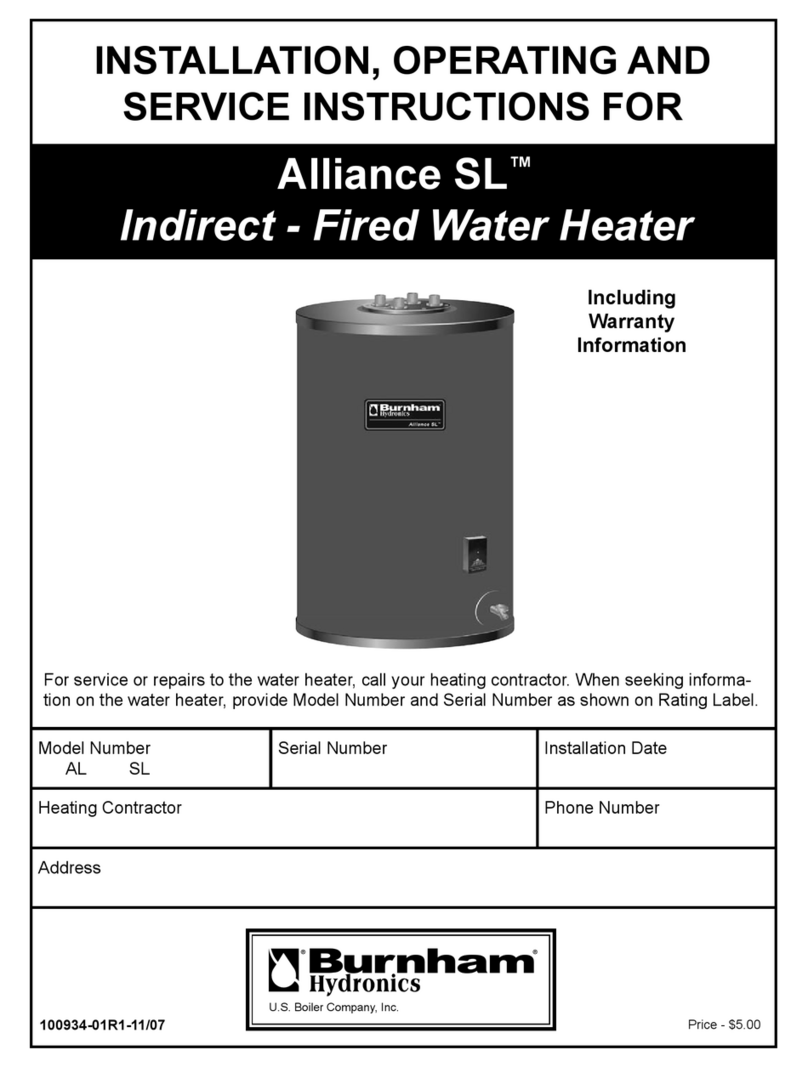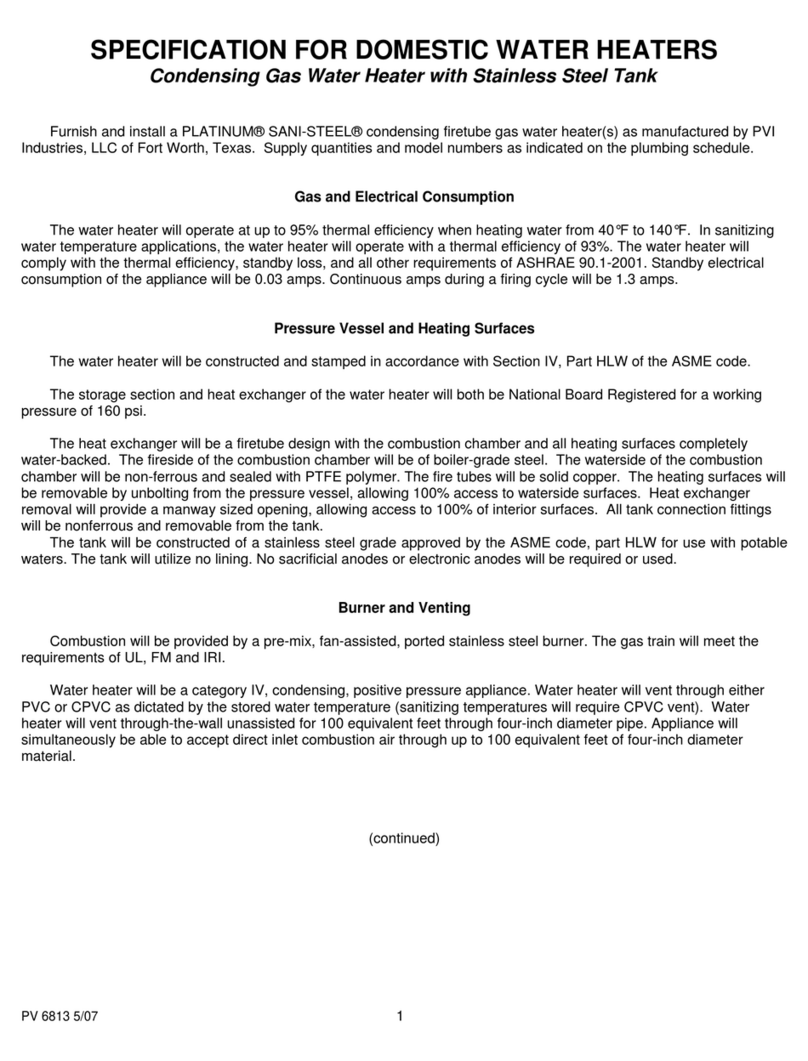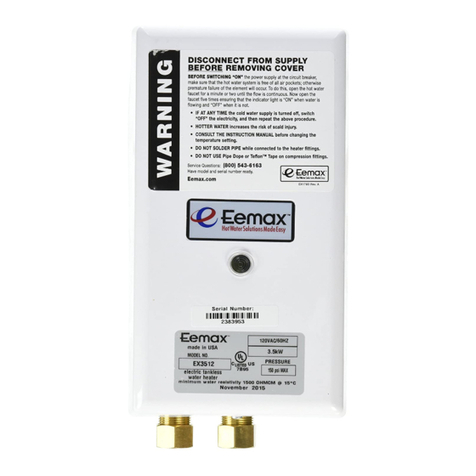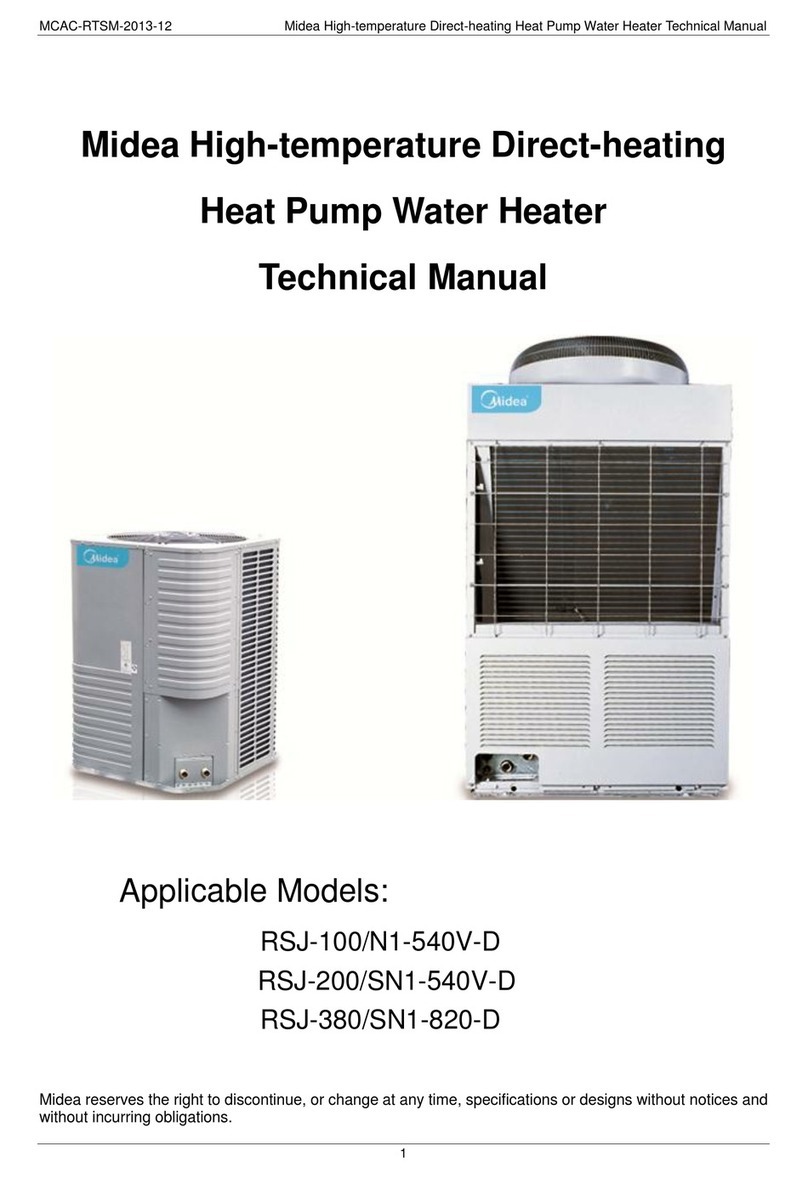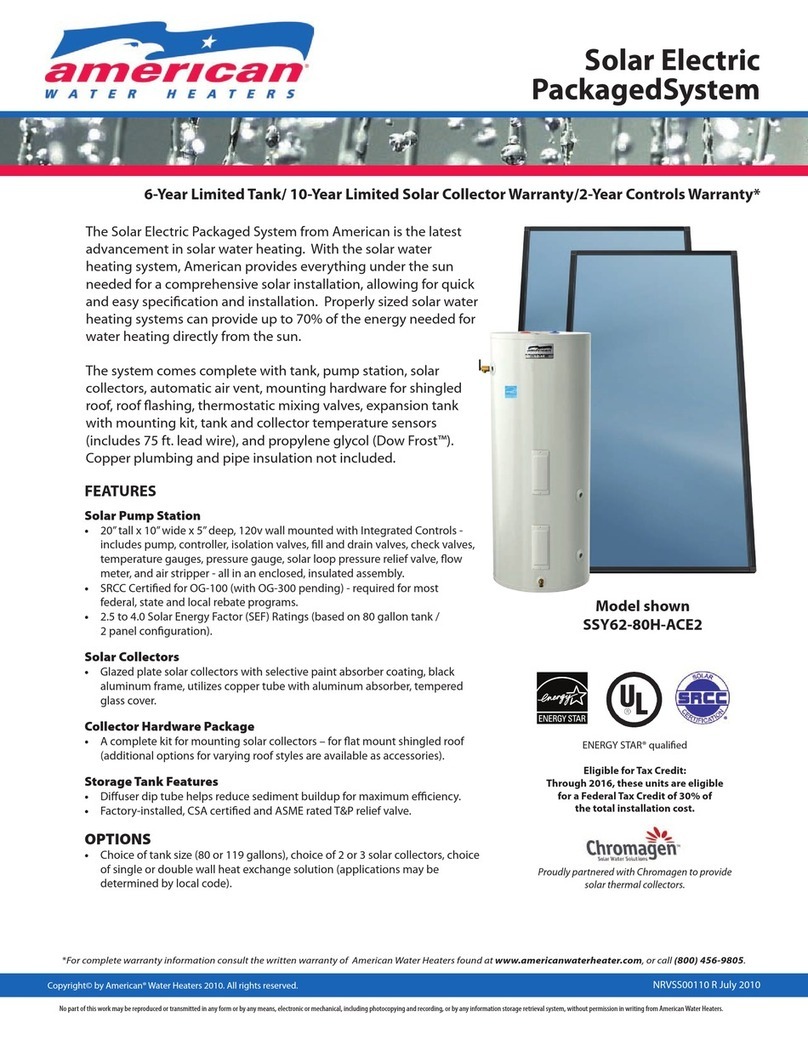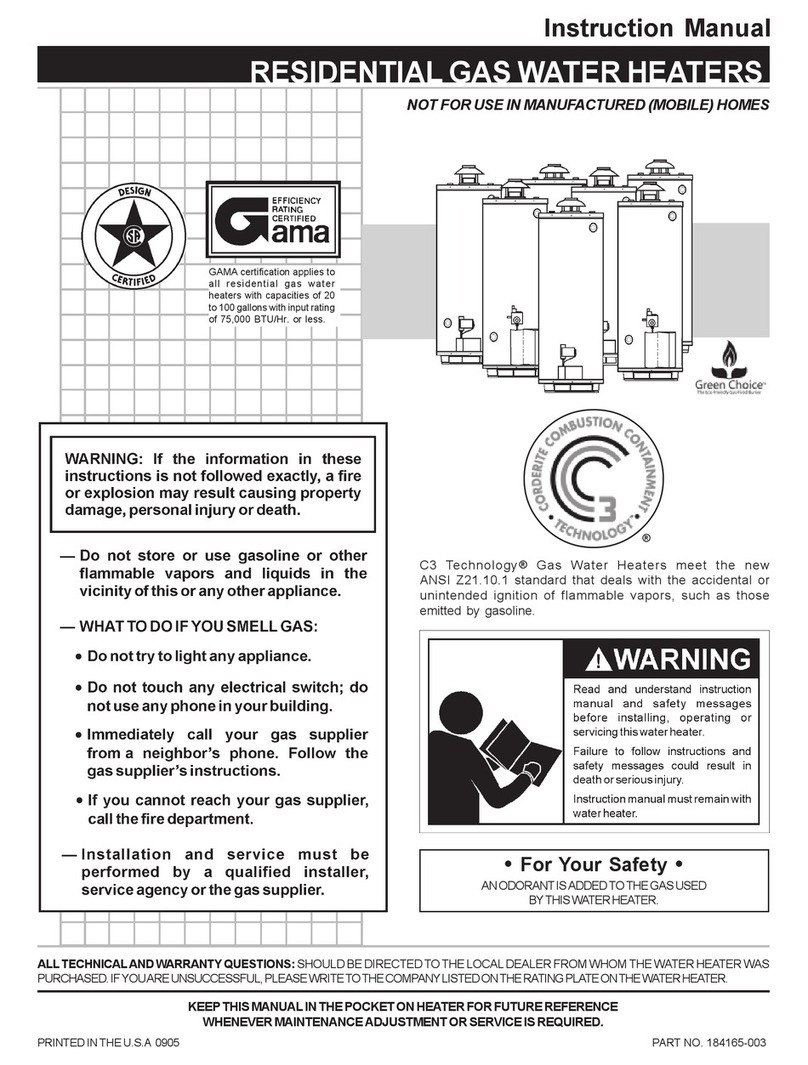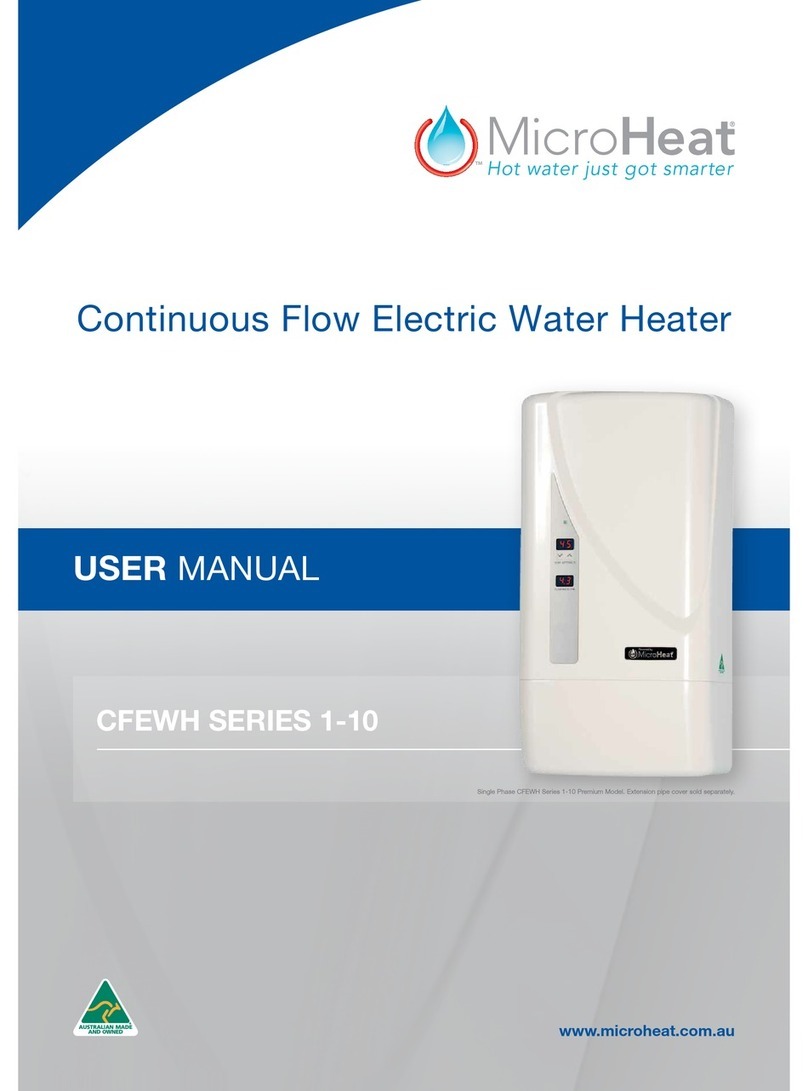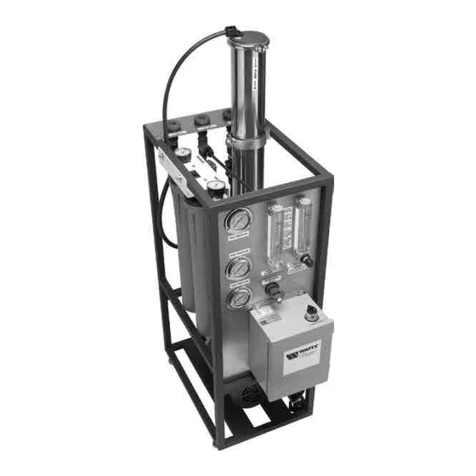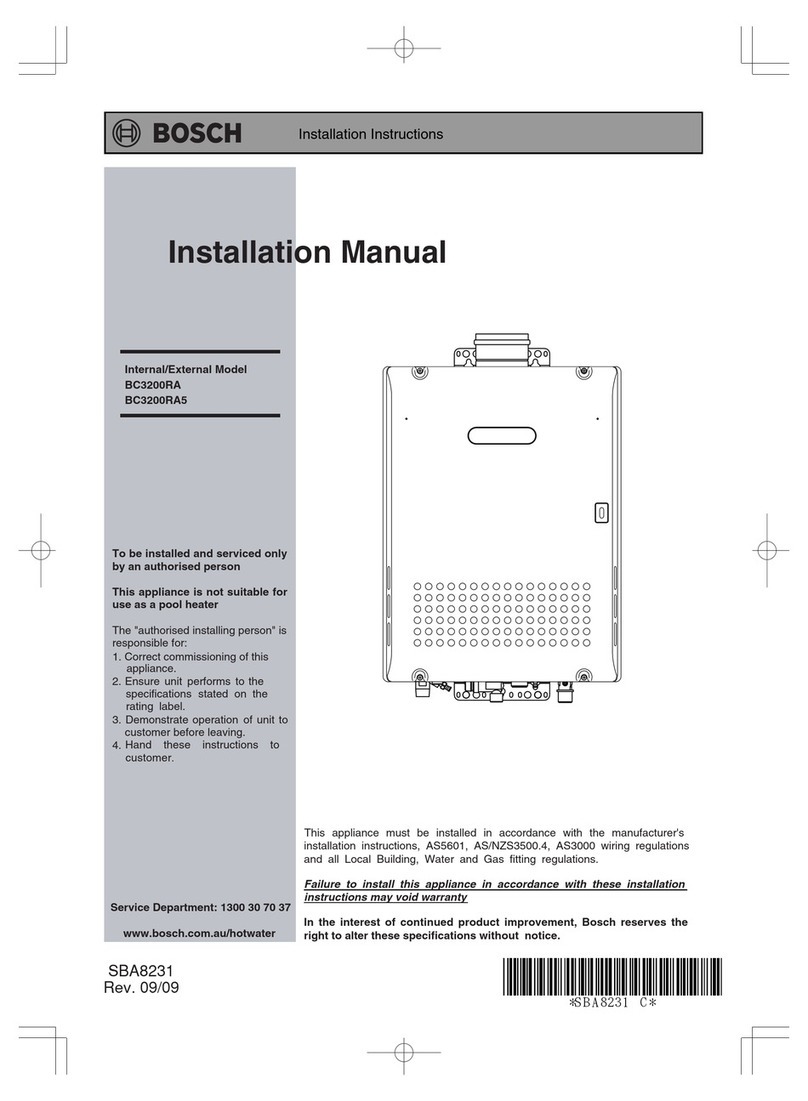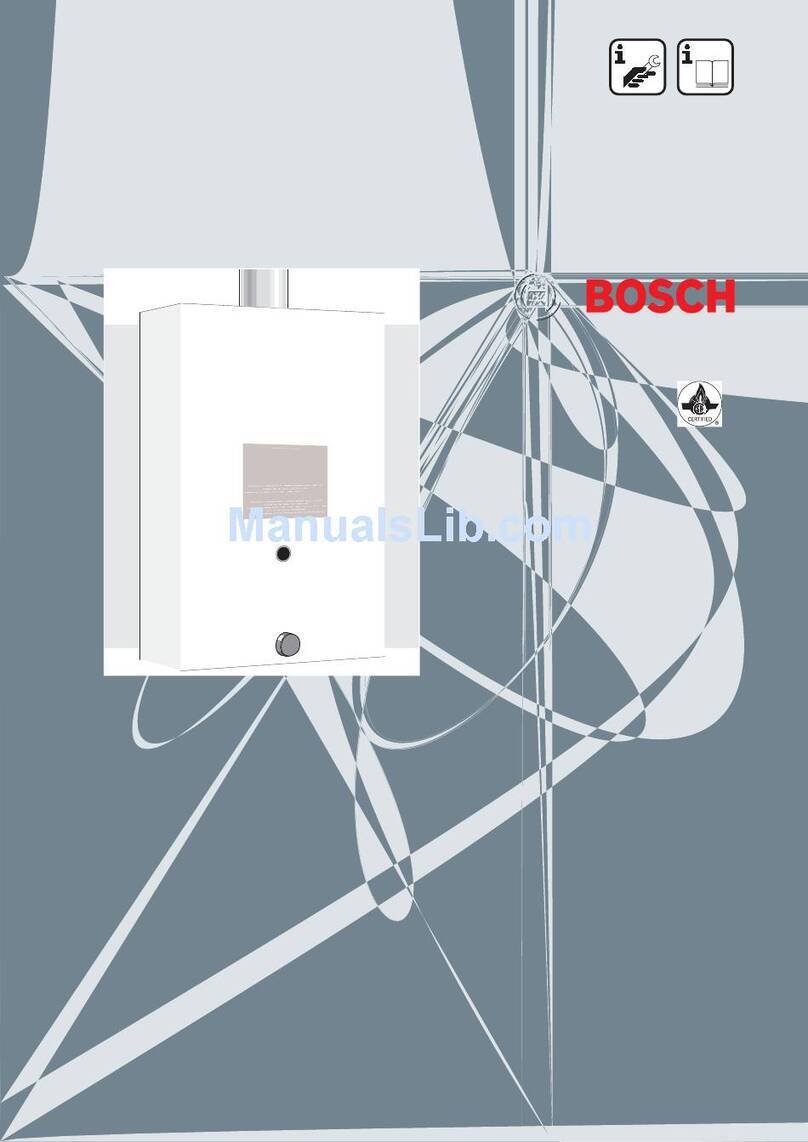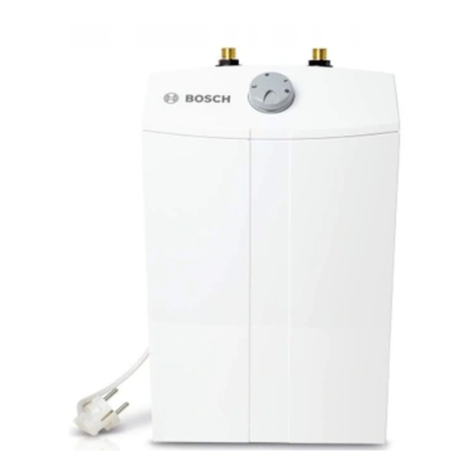14 6 720 606 518
If some burners ave yellow flames w ile ot ers ave good
flames, it is likely t at dust, lint or spider webs ave partially
clogged t e burner venturis. Contact a gas service person
to clean t e remove and clean t e burners.
Mineral Scale Build-up: T e AquaStars eater, w en
operated at lower temperatures settings, do not accumulate
mineral build-up. If owever, t e water as a ig mineral
content, periodic descaling may be necessary. T e eating
coils s ould be flus ed wit a descaling solution. Consult
your service person.
TROUBLE SHOOTING (see maintenance table)
Introduction
The quaStar 125 B “S” burners are activated by a water
flow valve. Numerous water related problems can cause
this water valve to malfunction such as: Insufficient water
flow volume to activate the burners at its minimum flow
requirement; Dirt in the water flow valve causing it to
malfunction; Sediment build-up in faucet aerators, or shower
heads; Uneven pressures between cold and hot. (with single
lever faucets) Plumbing cross overs. These water flow related
problems can cause the heater to deliver less than its full
output, or to fail to ignite or to shut down completely.
Problems are stated in upper case, bold face. Most common
causes for t e problems follow in order of likeli ood. T e
suggested solutions require t at t e cover be taken off. To
do t is, remove incandescent particle tray and unscrew t e
central screw located at t e bottom of t e front cover. Pull
main cover out toward you and lift up and out.
PILOT LIGHT WILL NOT LIGHT
1. No gas to the A uaStar
A. Gas cock on gas line may not be open.
B. Gas valve button as not been pus ed in on “PILOT”
position ( ).
C. Gas regulator may be s ut or damaged.
2. In-line A uaStar gas regulator jammed (usually on
LP gas)
Replace or unlock t e regulator. Note: T e regulator
furnis ed wit t e eater is designed for low gas pressure.
Excessive pressure will lock it up (propane only). Locking
usually appens if t e gas pressure between t e gas tank
(propane) and t e water eater’s gas regulator as not been
reduced. See page 2 for recommended correct gas pressure.
To unlock a regulator, consult your gas supplier.
3. Pilot orifice clogged and/or air screen dirty, or pilot
gas filter is dirty.
Clogging of t e pilot burner can be caused by dust and any
suspended matter contained in t e ambient air.
Alt oug t e filters can lengt en t e cleaning intervals, t ey
can never completely prevent suc clogging. In consequence
t e gas jet issuing from t e pilot orifice is reduced and or
t e air mixture is reduced. T e pilot flame is weak and t us
can no longer eat t e t ermocouple sufficiently. For cleaning
purposes, t e air filter screen is pulled off, was ed and blown
out. T e pilot orifice as likewise to be cleaned or exc anged.
Consult a gas service person to clean t e pilot.
4. Air in the Gas Line
Note: Normally t is is a problem only at t e time of initial
installation, after t e pipes ave been worked on, or after a
propane tank as been allowed to empty, or after t e eater
as been s ut down for a long time.
Bleed all t e air trapped in t e gas line. Because of t e very
small pilot orifice (especially on LP gas models), bleeding
out all t e air could take several minutes. Depress t e pilot
button ( ) and depress t is button until all t e air as
escaped, and t e gas as arrived. During t is process, press
repeatedely on t e piezo ignition button until t e pilot flame
as ignited.
PILOT LIGHTS BUT FLAME GOES OUT WHEN BUTTON
IS RELEASED
1. Pilot push button was not pushed in far enough or
was not held in long enough
Depress t e pilot button. Hold it pus ed in for at least 15
seconds to give time for t e pilot flame to properly eat t e
tip of t e t ermocouple.
2. Pilot flame improperly aimed or is too weak so it is
not properly heating the tip of the thermocouple.
T e Pilot flame s ould be a s arp blue flame and aimed at
t e tip of t e t ermocouple so t at it envelops 10 mm (3/8
“) of t e t ermocouple tip. Pilot flame as to be properly
aimed at t e t ermocouple. See Fig 8.
3. Poor thermocouple connection at the electromagnet
Note: Electromagnet is part #8707201094 located on t e
rig t side of t e gas valve be ind t e piezo pus button
assembly. C eck t e tig tness of t e t ermocouple
connection nut at t e electromagnet: T e Electro-magnet
connection is a large aluminum 17mm ex ead nut. T e
t ermocouple end is a 5 mm brass nut w ic screws into
t e 17 mm nut. Tig ten t e t ermocouple nut snugly but not
too tig t.
4. Poor circuit connections at the ECO. (Energy Cut-
Off overheat protection)
Oxidation or looseness of t e ECO terminal connections
can result in millivolt current loss t roug t e t ermocouple
safety circuit. Clean terminals wit very fine sand paper or
an eraser and reconnect ECO leads.
5. Faulty ECO (part #8707206017)
If cleaning t e terminals attac ed to t e ECO did not fix t e
problem, connect a jumper wire between t e two wires and
try to relig t t e pilot. If t e pilot flame now remains on,
replace t e ECO. If t e flame still goes out w en t e button
is released, t e ECO is not defective. Go to next step.
6. Faulty thermocouple (part #8747202083) or
electromagnet) Unless these 2 parts are at least 8 to
10 years old, it is very unlikely that they are faulty.
Before testing, reconfirm that #2 is absolutely correct,
and that all connections are clean and tight.





















